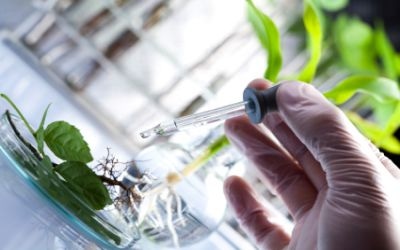The use of DNA testing of botanicals can serve a valuable concomitant role in protecting against adulteration and meeting GMP requirements for incoming raw material testing.
February 3, 2011

by Danica Harbaugh Reynaud, Ph.D.
Accurate botanical species identification and the detection of adulterants are two of the greatest challenges facing natural products companies today. Therefore, the need for scientifically valid botanical identity methods is increasingly important and a strict regulatory mandate. Although a number of traditional morphological, microscopic and chemical methods have commonly been used for botanical identity testing, technologies using DNA offer reliable alternative methods that can provide increased precision in differentiating closely related species, as well as identifying intentional and accidental adulterants and contaminants.
DNA, or deoxyribonucleic acid, is the genetic material found in every living cell of all organisms, including plants, animals, bacteria and fungi. The arrangement of bases in a strand of DNA can be unique to a particular species, population or individual. Some of the early forms of DNA fingerprinting include methods based on comparisons of random pieces of DNA. However, a more highly reproducible and informative analysis is the comparison of gene sequences from a specific stretch of DNA, referred to here as DNA sequencing. DNA sequencing has dominated the field of plant taxonomy for the past two decades and is beginning to take root as a preferred method of medicinal herb authentication for many plant species. Today, the use of standard, short DNA sequences, also known as DNA Barcoding, is being validated for the identification of a number of species, from plants to animals.
There are a number of advantages to using DNA sequences for species identification. Because the same DNA is present in all of an organisms cells, DNA identity testing can be done on any part, from any life stage, including whole, chopped, ground or mixed materials and select finished products. Additionally, it is not affected by environmental conditions or harvest times, as alternative methods can be. Because it is highly sensitive, it can identify many unexpected adulterants, contaminants and additives that are present in low levels or chemically inert, including common fillers such as soy flour, as well as non-botanical contaminants such as bacteria, fungal deterioration and insects. Most importantly, it can reliably and accurately distinguish between closely related speciessuch as ginseng species, which may be difficult to discern using alternative methodsas well as identify distinct lineages, varieties and even hybrids.
Despite the advantages of DNA technologies in botanical identification, the use of DNA has not been widely adopted in the natural products industry. This may in part be due to the fact that unlike traditional morphological and chemical methods, there is no major pharmacopoeia nor recognized standards for the use of DNA. However, the realization that alternative methods may not be satisfactory for identification of some species and additional routine scientifically valid methods are necessary to address the increasing need to comply with the cGMPs (current good manufacturing practices) has pushed more companies to offer relatively affordable DNA-testing services with turn-around times consistent with the needs of manufacturers. To that end, AOAC International is now including genetic methods under its revised method validation guidelines, and DNA-sequence-based methods are being validated for dozens of common medicinal herb species.
The question is whether DNA-sequence methods should replace or complement chemical methods of identification. Although DNA is well-suited for taxonomic identification and for identifying species mixtures such as adulterants, it is unable to identify the plant part, as well as the presence or abundance of chemical components, both of which are critical for the quality and efficacy of the final product. Therefore, DNA is best suited to complement chemical methods. However, DNA may be used to replace morphological and microscopic methods, especially in processed materials, for which the quality of the results relies heavily upon the training of the person performing the test and which are difficult to perform on a large scale. Therefore, the use of DNA may be best used as the initial identity test screen before other more costly chemical tests are performed to characterize the quality of the material.
Despite DNA technologies dominating the field of taxonomy in the academic community for decades, DNA is just emerging as a new frontier in the natural products industry. However, with contract laboratories now offering validated DNA botanical identity tests at an affordable rate, DNA is sure to take hold as a feasible complement or alternative to other routine testing methods. And unlike alternative methods, many consumers recognize DNA as synonymous with true identity and quality, potentially offering a marketing advantage for products that have been tested using DNA.
Danica Harbaugh Reynaud, Ph.D., is president and CEO of AuthenTechnologies LLC in Albany, CA. AuthenTechnologies is a contract-testing laboratory specializing in DNA botanical identity testing for the natural products industries; the company also offers a DNA-Tested quality seal program for consumer products.
You May Also Like




.png?width=800&auto=webp&quality=80&disable=upscale)